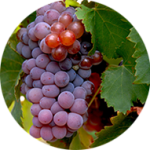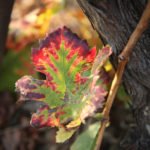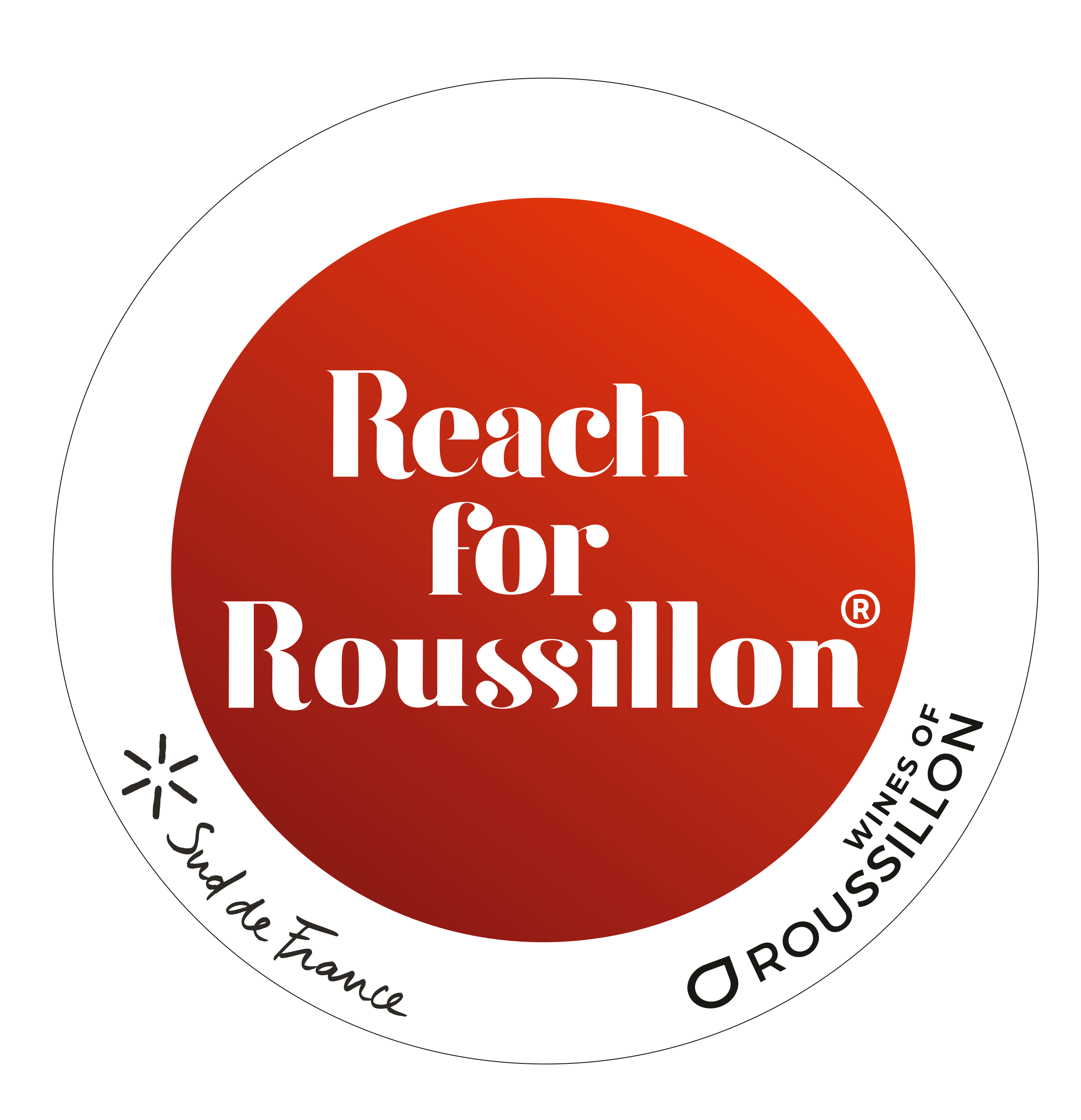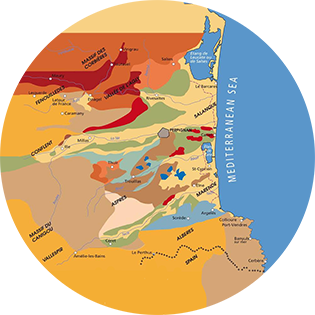Our wines
The fusion of ancestral and natural practices
Heritage and expertise
Roussillon’s passion and dedication to winemaking goes back centuries. Modern winemaking practices, alongside the preservation of ancestral know-how, allow Roussillon to produce quality wines bursting with character and individuality.
It proudly perpetuates the Mediterranean tradition of Vins Doux Naturels (fortified sweet wines) production, which dates back to the Middle Ages. The region supplies 75% of France’s VDNs with AOP-certified Maury Doux, Muscat de Rivesaltes and Rivesaltes. The UK is the top importer of Roussillon’s AOP Vins Doux Naturels by volume.

Varietals
Roussillon producers cultivate no less than 24 grape varieties, many originating from the region. Indigenous grape varieties are prevalent in Roussillon and responsible for the originality and diversity of its wines. Roussillon is one of the places in the world with the largest stock of old vines.
Among the main red varietals are black Grenache, Lledoner Pelut, black Carignan, Syrah, Mourvèdre and Cinsault. Key white varietals include white and grey Grenache, Maccabeu, white Carignan, Roussanne, Marsanne, Viognier, Vermentino, Muscat à petits grains and Muscat d’Alexandrie.

Working with Nature
Roussillon is a viticultural paradise and its winemakers know it. Vines enjoy near perfect growing conditions which eliminate the need for intervention in the vineyard. Roussillon’s producers are committed to preserving the environment and caring for the land in the most natural way.
It is no coincidence that Roussillon is one of France’s most committed region in terms of organic viticulture and biodynamic practices. As part of a continuous upward trend, 32% of all Roussillon vineyards are now already certified organic.
Varied micro-terroirs
Varied geological structures and micro-climates are distinctive Roussillon characteristics, which means there is terrain to suit and maximize the characters of every grape varietal. While soils are predominantly clay/limestone, shist and «gravelly», some specific terroirs were recognized a distinctive AOP certification, i.e. Côtes du Roussillon Villages Caramany from gneiss and granite terrain, Côtes du Roussillon Villages Latour de France from terrain containing a dominance of grey schist, Côtes du Roussillon Villages Lesquerde from sands of gneiss and granite and Côtes du Roussillon Villages Tautavel from a limestone-dominant terrain. The Crus from Côtes du Roussillon les Aspres are from gravel or small pebble soils with yellow clay as a liant. The Maury terroir sits mainly on Aptian, non-metamorphic black schist at the heart of the Agly Valley.
 Red soils on compact limestone
Red soils on compact limestone Limestone soil on the edge of the Corbières and Thuir
Limestone soil on the edge of the Corbières and Thuir Black Soils, schistous marls from the Cretaceous Period
Black Soils, schistous marls from the Cretaceous Period Soils seated on schistous colluvial deposits
Soils seated on schistous colluvial deposits Soils originating from granite and gneiss
Soils originating from granite and gneiss Very stony soils on high terraces
Very stony soils on high terraces Very stony soils on low terraces
Very stony soils on low terraces Clay and slit soils of Les Aspres
Clay and slit soils of Les Aspres Stony clay soils Les Aspres
Stony clay soils Les Aspres Stony soils of the Thuir terrace
Stony soils of the Thuir terrace Sandy, stony soils of the Albères foothills
Sandy, stony soils of the Albères foothills The whole range of stony, sand and slit, clay and silt, and sandy sols of the coast
The whole range of stony, sand and slit, clay and silt, and sandy sols of the coast The hydromorphic soils of the basins
The hydromorphic soils of the basins Limit of the permanent saltmarsh
Limit of the permanent saltmarshDry wines
The quality of Roussillon’s dry still wines is reflected in no less than 9 AOPs and 2 IGPs. The production of reds is predominant, followed by rosés and whites. Dry wines from the Roussillon are full of personality and originality thanks to the use of an array of flagship varietals such as Syrah, black, white and grey Grenache and Carignan, Mourvèdre, Lledoner Pelut, Maccabeu, Malvoisie or Tourbat du Roussillon, small grapes Muscat and Alexandria Muscat. On a regional basis, they represent 66% of the vineyard area, 79% of the total wine production and 20% of exports worldwide.
Vins Doux Naturels (VDN)
These fortified sweet wines are highly characteristic of Roussillon and account for 80% of France’s total VDN production. Only a handful of varietals are used; Grenaches, Maccabeu, Malvoisie or Tourbat du Roussillon, small grapes Muscat and Alexandria Muscat. Their colour ranges from garnet, white to rosé and older wines develop characteristic warm, amber or tawny hues. They originated in the 13th century after Arnau de Vilanova, a physician at the court of the Mallorca kings in Perpignan, pioneered the process of ‘mutage’.

